Are Pedals the Place For Power Meters? Maybe
If you’re a Slowtwitcher you’re likely to use a power meter for cycling. Just over half of you prefer it in your pedals, or at least you would, ideally, all things equal. Are the pedals the right place for your meter? Maybe.
The pedal makes sense, because you can buy one power meter and it’s portable across bikes. No doubt this is what many of you were thinking when taking our poll a few weeks ago (results below).
But there’s more to consider.
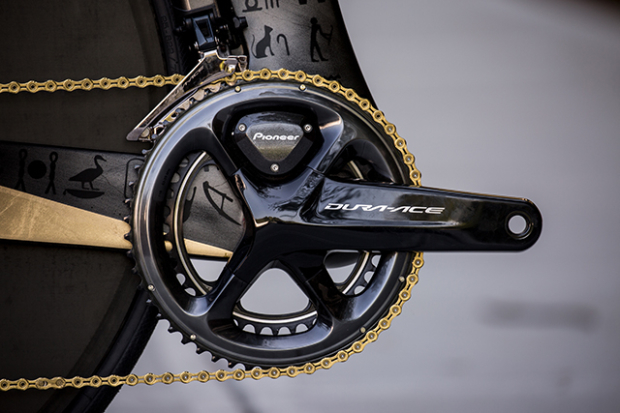
My focus today is the platform, not which power meter is the most accurate, reliable, best software and so on. In fact, here’s my big ask for today: I’d like us all to suspend the question of PM accuracy. “Not fair!” Noted. Just, most of the PMs today claim enviable accuracy (+/- 1.5%). Unlike tire rolling resistance, or bike aerodynamics, comparative testing of all the major PMs against a reliable measurement is scant (to nonexistent).
Every Component Has a Function
And, look, I'm not the expert on power meters! But I have seen the arc of component improvements since the era of 5 gears friction shifted, so, let's not forget that PMs replace components and when they do they often negate the benefits of the components they replace.
A pedal is a bicycle “component” and these typically have specific mechanical functions. Derailleurs, brakes, levers, cranks and bottom brackets, hubs, chains, and usually cassettes are all components and are typically part of a “road group” or “groupset” or “groupkit” or “gruppo” if you like the old Italian word. Basically, if Campagnolo made it (in the old days) it was part of the gruppo.
You can add pedals to the list of components. Pedals are very techie. We read about Time, Look, Shimano, Speedplay and other pedals and how they work and power transfer and surface area. Degrees of arc. Rotating weight. Engagement tension. Stack height. Bearings. Spindle lengths. Aerodyanmics. How important is all of this? In my opinion, very. Even more so for triathletes who need to walk or run their bikes in and out of transition, because of cleat wear and cleat fouling, not to mention ease and quickness of clip-in after leaving transition.
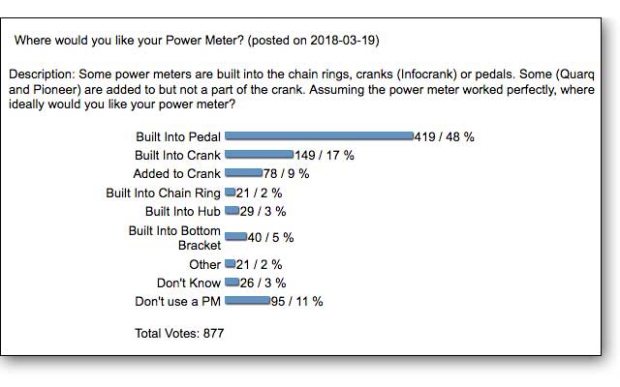
The pedal is one of the critical components, right alongside derailleur function. Here’s what this means in the context of the power meter: If you choose to make the pedal your power meter you lose the capacity to decide what you want in a pedal. Further, if you don’t like hub-based PMs because you can’t transfer them between tri/road and gravel/offroad, isn’t the same true about your pedals?
Crank-integrated
About a third of all Slowtwitchers (according to the poll below) adhere to the line of reasoning above. Those who answered “crank-based” appear unwilling to sacrifice a pedal’s features and won’t accept the tradeoff, instead opting for a crank-based solution.
There are several paradigms. InfoCrank, 4iiii and Stages embed their measuring functionality in the crank arm. SRM and Quarq focus on the crank spiders (the thing that goes between the crank and the chain ring). PowerTap makes 3 power meters and 1 is a set of chain rings. This is a third type. Pioneer’s PM is a tweener, attaching to both the spider and the chain ring. Then there are bottom bracket-based PMs and finally Rotor, as I understand it, embeds their functionality into the BB spindle.
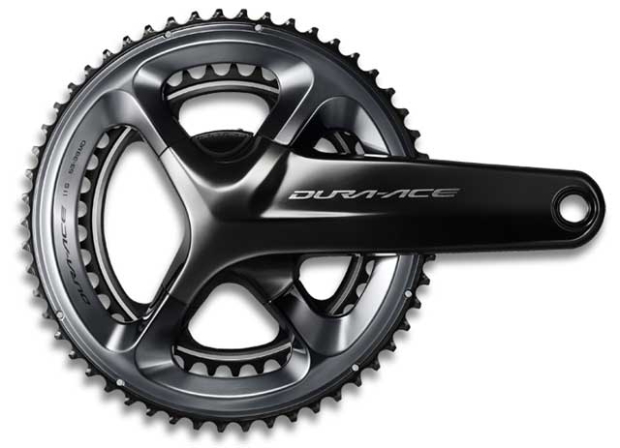
So, there are at least 5 ways to place a PM into a system in the general area of the crank and, in keeping with my thesis, each either disrupts or disqualifies the use of a potential component feature. What are those features?
Crank arm length is one. Rotor and InfoCrank both offer very well respected meters, and I believe both offer lengths down to 155mm. Another feature is the non-round ring, for those so-inclined, and because Rotor makes the cranks, the power meter, and this style of ring (which I’ll be writing about later this season) Rotor is a logical choice for those who require this component functionality.
Beyond Rotor the obvious next choice, if you’re a fan of a particular crank maker, is Shimano. Pioneer may be the best option if what you want is a really good power meter for those who appreciate Shimano’s cranksets, is very affordable, and is upgradable (you can start with single-leg and then upgrade later), and if you admire Pioneer's unmatched software backup (one reason why it has a subculture of fans).
While Pioneer’s meter is not limited to Shimano, it’s an elegant, unobtrusive, accurate integration into Shimano’s cranks. But then, Shimano also offers its own crank-based PM! You can throw Stages and others in there as PMs that grant you the functionality you want in cranks, chain rings, pedals and hubs.
What Pioneer (and Shimano’s PM) is to Shimano, Quarq is to SRAM. This South Dakota based company has been at the power meter game for quite awhile, but has also been SRAM-owned for quite awhile. (Though Quarq works quite well with Shimano systems, as you see with the DFour below.)
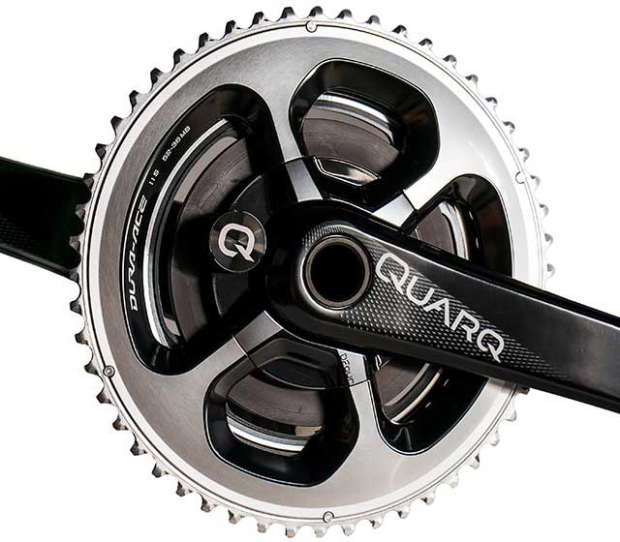
PowerTap makes a chain ring with a built in power meter. If you choose this option, the PowerTap C1, you’re free to use the crank, hub, chain, bottom bracket or pedal of your choice. Sort of. This option is only for 5-arm 110BCD cranks. In my mind, the best use for this product is as a replacement for existing chain rings that come on original equipment bikes (as in, tri bikes) that have FSA cranks. This is a lot of bikes. Quintana Roo, Cervelo, Felt, lots of bikes come with FSA Gossamer cranks. This is a $399 power meter, it is branded PowerTap, but is manufactured by FSA. Accordingly, its chain rings are going to function as well as well-functioning FSA rings function. (Is my grammar functional?)
But you lose something here as well. Gearing is a component function, alongside crank length, shifting and overall crank performance. PowerTap C1 chain ring based power meter is the bolt pattern, and the gearing. You can get 53×39, 52×36, 50×36. Some folks may want 50×34 and you can’t have that. However, 52×36 is the most popular original equipment choice today among the bike makers with their ears to the tracks.
Were I a bike maker, spec'ing FSA cranks, I’d be sore tempted to place these power meters on my bikes for sale as original equipment.
Hub
Originally there was the SRM, and then there was the PowerTap hub. To my memory this was the second power meter largely available for purchase, and it was probably the more commercially successful of the first two because it hit a more affordable price point. Now, like large screen TV sets the market gets more efficient, more commoditized, and this hub is now available for $399.
This product, again, replaces a component. Fortunately it’s a good hub as hubs go, because it’s been around for a couple of decades and anything that might go wrong has gone wrong and has been fixed. So, it’s watertight, the bearings are good, the pawls are good, and just like Rotor and InfoCrank make good cranks, PowerTap makes a good rear hub.
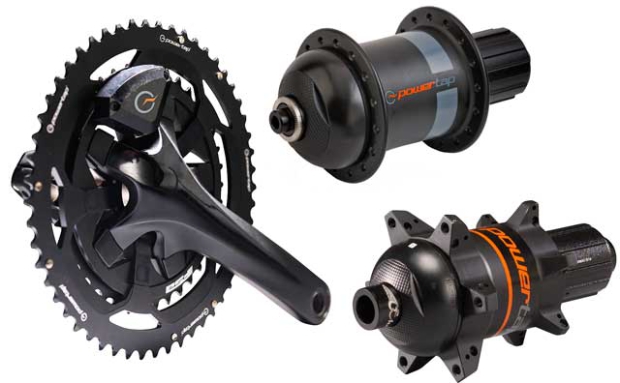
Also, rear hubs cost something. A PowerTap rear hub costs about $150 more than a Dura Ace rear hub, and about $50 less than a Chris King rear hub. So, this cost is instead-of rather than in-addition-to. You might say that a PowerTap rear hub is a pretty good hub with a power meter thrown in. Indeed, if you buy an ENVE G3 SES 4.5 wheelset from ENVE, it’s $2,700 to $3,400 depending on the hubs you choose. If you buy that same wheelset from Powertap it’s $2,700.
Hub-based meters give you the same advantage as pedal-based: They’re movable from bike to bike. Most folks don’t find that of value, however, or even a detriment, because you’d have to buy two power meters (theoretically) one for your training wheel, one for racing. But I counter that argument with: A) in triathlon I no longer hold with the training/racing wheelset paradigm, because I need all the riding I can get on my large surface area wheels; and B) this hub is priced so that 2 of these cost less than 1 set of Garmin Vector pedals.
Of course, you can’t ride a hub. You have to build it into a wheel. But once you build that rear wheel, now you have a second rear wheel. On the other other hand, if you find yourself about ready to change wheel platforms (rim to disc brake, 700c to 650b, to tubeless, to gravel) then you’re sort of stuck.
But then – again – if you need to change your wheel platform, you need to change it. You need a new set of wheels. Those wheels need a rear hub. See?
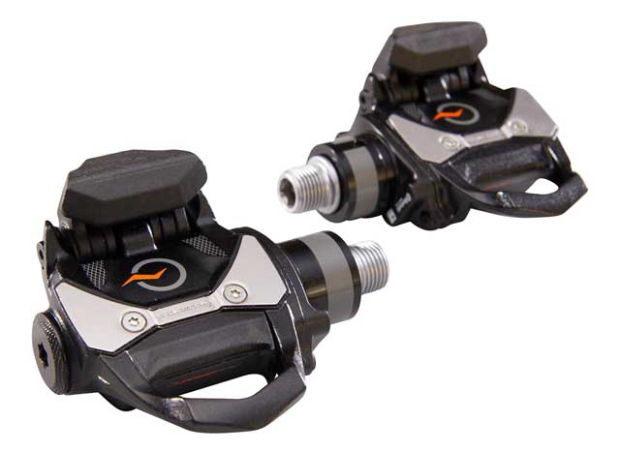
I think if I were a wheel maker I’d make a Powertap version of most of my wheels. And, again, if I were a bike maker I’d look hard at making a bike that integrated a power meter, and maybe the wheel is a good place (especially if my bike was not spec’d with an FSA crank). Maybe it’s Pioneer. But PowerTap’s hub is an attractive option, especially after its recent price drop.
The Upshot
What behavior am I advocating? What am I asking you to do? It depends who “you” are. If you’re a bike or wheel maker, I’m asking you to consider the more liberal use of PMs into your products. I’m asking PM makers to consider the use of your products as original equipment spec. There are consequences to this! Retailers may lose the PM upgrade as a revenue source. But, they may gain the new bike sale as a consolation!
What about for consumers? How should your behavior change? I’m not sure that it should. Just, power meters are getting cheap enough now that you can start to consider a longer term strategy for the appropriate platform. You may find that in 5 years you’ll have not a single, but several, power meters. Not because you’re wealthy! But because a rear hub built into a wheelset might be such a small upcharge that this is your best power meter platform. Or, because a crankset sold with a built in or integrated power meter becomes an original equipment option that doesn’t add much money to the bike.
If so, then you have the capacity to enjoy the features of certain key components. We’ve just reviewed Time ATAC pedals, I’m about to review TIME Xpresso pedals, followed by Speedplay and Shimano. If you’re riding Garmin Vector or Powertap P1 pedals, then whatever value you might get out of these other pedals are unavailable to you.
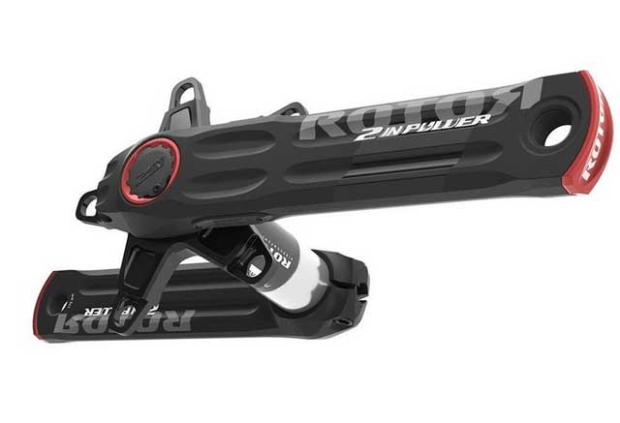
I’m not trying to dissuade you from pedal based meters! Just, consider the poll above. This poll is not reflective of what should be the case. Perhaps pedals should be the place most of you want your meters. But way more of you should have chosen hubs! More than 3 percent! Maybe if I took that poll today, rather than 4 weeks ago, more of you would choose hubs based on PowerTap’s new hub price.
Since many of you are investigating changing your crank length anyway, way more of you should be considering a crank that solves several problems at once: the crank length you want; increased PM accuracy; the gearing you need (after you and I talk about your gearing).
After having thought all this through, for myself, I’ve decided to consider a PowerTap hub inside any rear wheel I buy from here on in. Why? Because the upcharge to do so is (or should be) low. Following this strategy I may discover, some years from now, that I have power meters on all my bikes; I don’t have to swap parts around. I could envision, 5 years from now, owning 3 wheelsets with PowerTap hubs, and while the cost of 3 wheelsets might be considerable, perhaps the total upcharge to PowerTap hubs might equal the cost of one set of Garmin Vector 3 pedals.
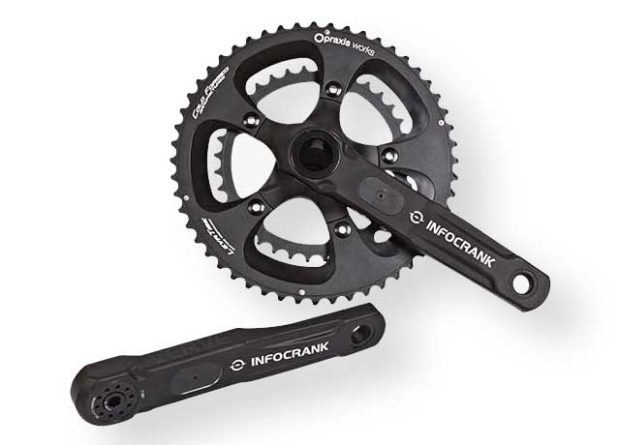
However, here’s what one Slowtwitch wrote, "I see the hub-based power meters becoming a thing of the past. This is coming from an owner of 2 separate Powertap G3 hub wheelsets. The G3 is awesome, don't get me wrong, but it is cost prohibitive to say the least that you need to buy a new G3 hub for each and every wheelset. I just bought a disc gravel bike, and plan on having at least 2 wheelsets for it, and I will likely go for the Powertap pedals soon to transition away from the G3 hub."
Considering the current power meter price landscape we all – consumers and bike and wheel makers – need to start to thinking more strategically about what our power platforms might look like in several years. But like the Slowtwitcher above, after rethinking it you may well end up right back at the pedal.


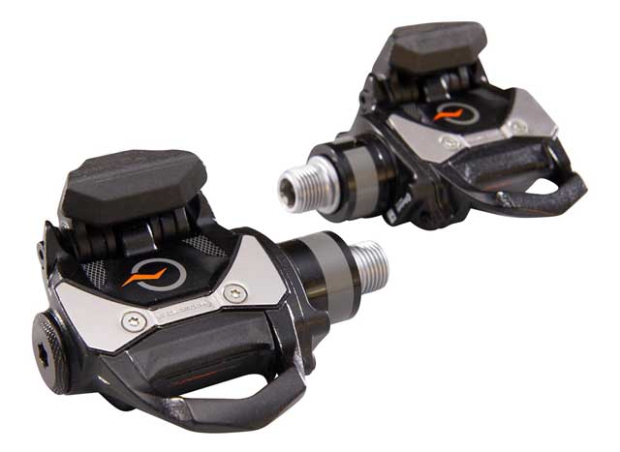
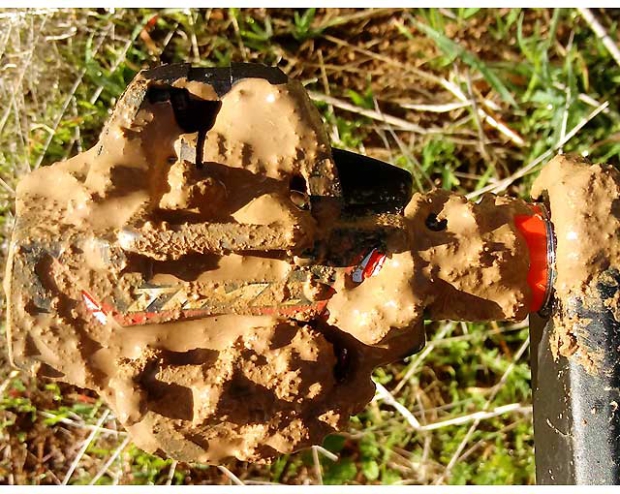
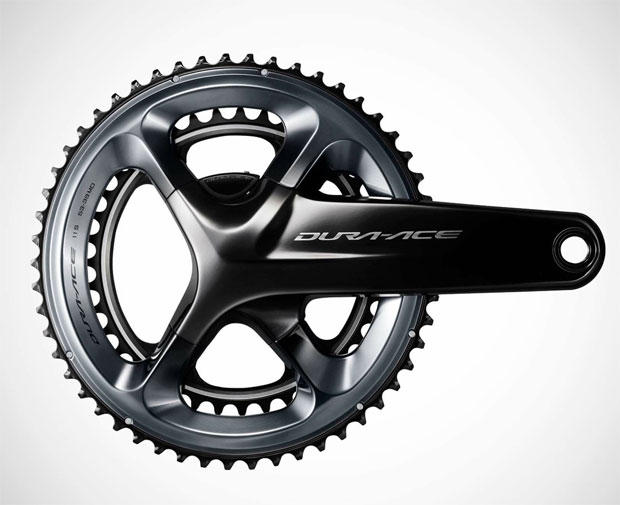
Start the discussion at forum.slowtwitch.com